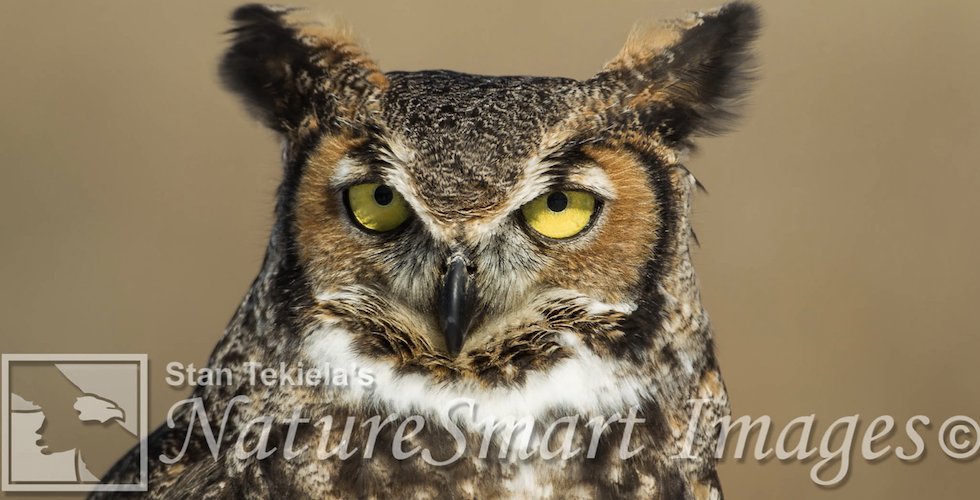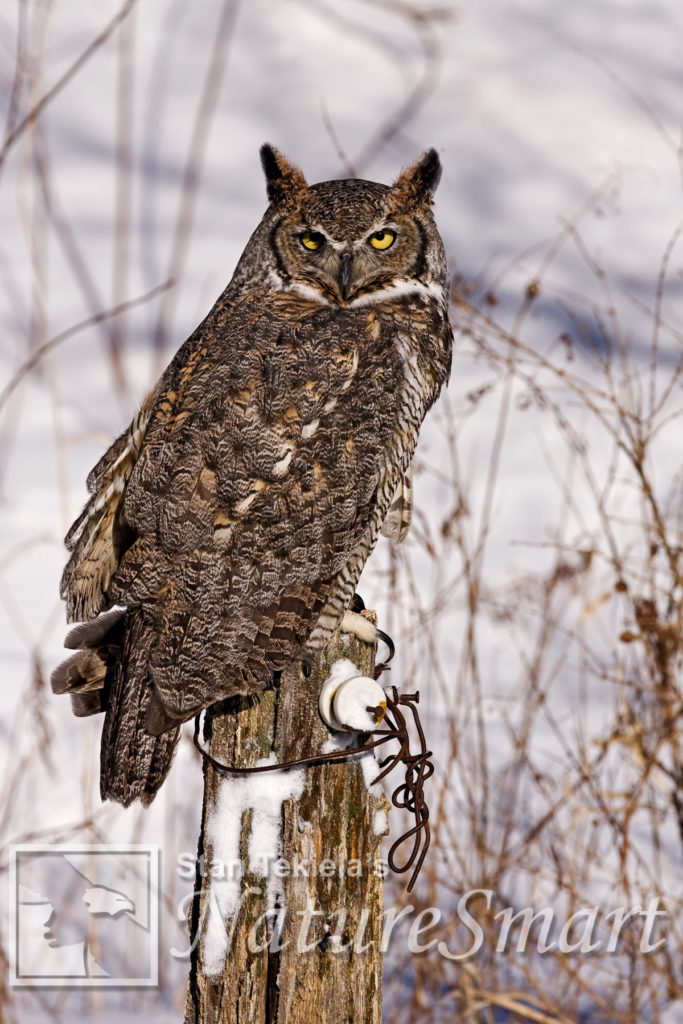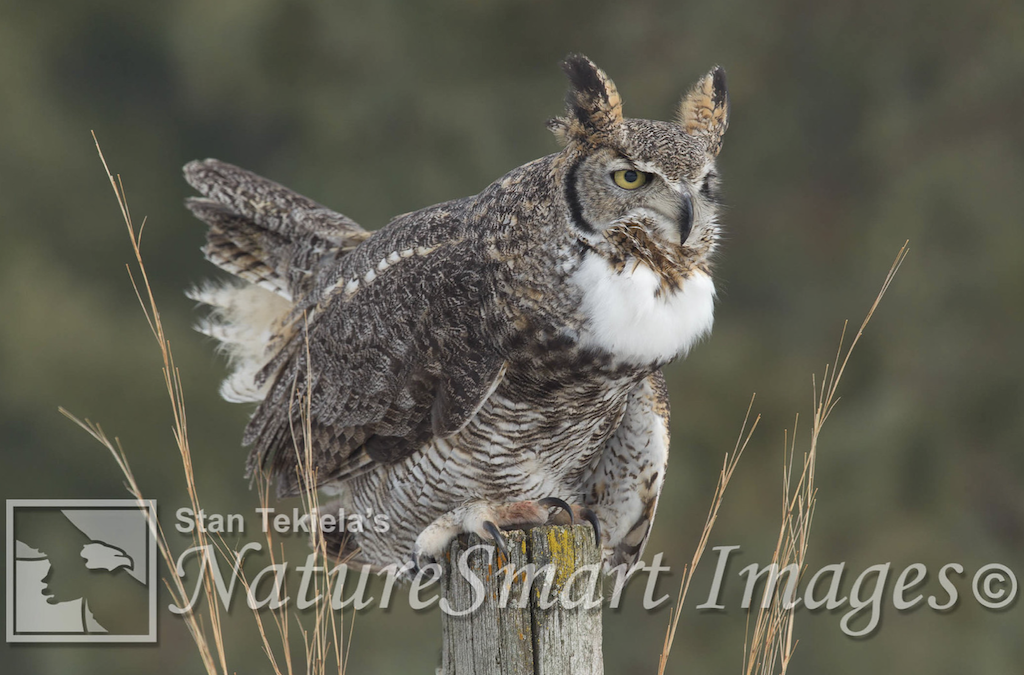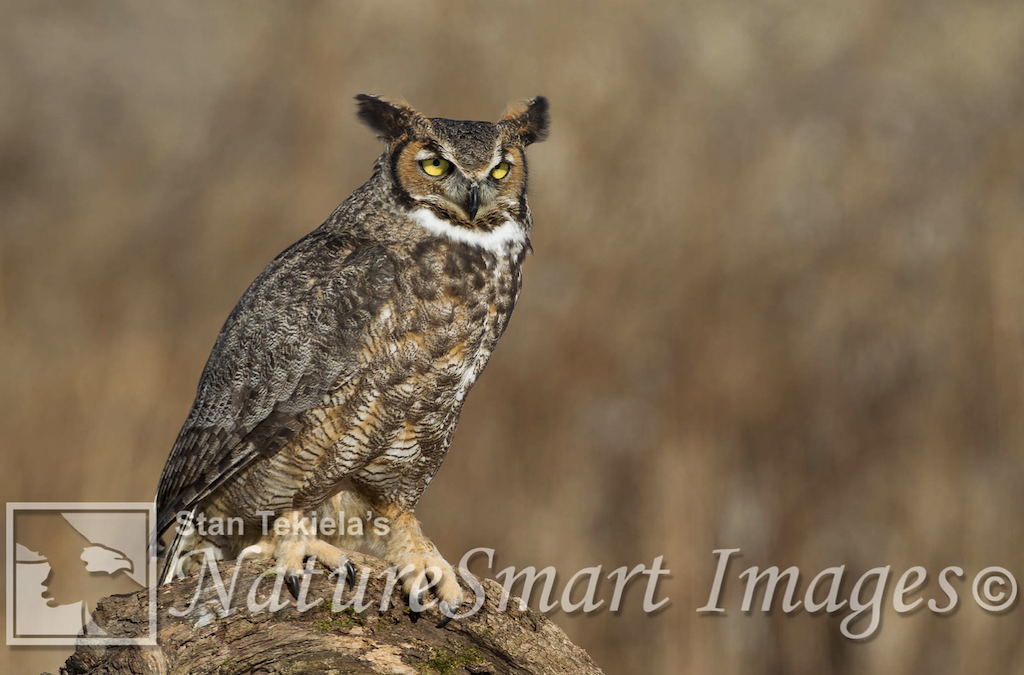
Are Great Horned Owls Hooting in Your Backyard?
At this time of year, Stan Tekiela gets a lot of emails and texts from people reporting they are hearing an owl hooting outside their windows at night. While many enjoy the sound, others complain that they can’t get to sleep. Either way, chances are, Great Horned Owls are the culprits.

The Great Horned Owl (Bubo virginianus) is the most common owl in North America, ranging from coast to coast and well into Canada and Alaska and south down through Mexico and into Central America.
The Great Horned Owl is the largest owl in America that has ear tufts. The tall and puffy ear tufts are a collection of feathers located just above each eye that look like ears or horns, hence the bird’s common name. The feather tufts don’t function to help with hearing; rather, they are thought to be a decoration or ornamentation. Some argue that the tufts help the owls blend into the environment during the day, so they are not bothered by daytime birds such as crows.
Great Horned Owls are usually a warm shade of brown to tan with some gray thrown in as highlights. Sometimes they can be a bright shade of gray to nearly white. They have large, bright yellow eyes and a characteristic white, V-shaped marking on the throat, which looks like a necklace or a bow tie. Females and males are identical in plumage; however, females are noticeably larger than males. On average they are 2 feet tall and have a wingspan of nearly 4 feet. For all their size, Great Horned Owls only weigh between 2.5 and 3.5 pounds. Even though they are large and powerful raptors, they are still not large enough to carry away a dog or cat that weighs more than 10 pounds.

Great Horned Owls mate in January and February. They are the earliest nesting birds in most of America, but Great Horns don’t build their own nests. Instead, they take over a hawk’s, eagle’s, or crow’s nest. Because these birds usually don’t nest until much later, the owls just move in and take over. Sometimes they will not use a nest at all but settle for a slight depression or cavity in a tree for nesting.
Shortly after mating, the female lays two round, white eggs. Incubation of the eggs takes about 26-30 days. The first chick hatches about 24-48 hours before the second. The mother will continue to sit upon the chicks for another month while the father brings food for the entire family. The father will brood, or sit on the young, for a short period of time each night to allow the female to go out and stretch her wings and defecate.
Owls in general have some amazing and unique characteristics. First, their large yellow eyes are fixed into their sockets unlike yours and mine. They make up for the lack of eye movement by having extra vertebrae in their necks that allow them to swivel their heads up to 270 degrees. We have seven vertebrae in our necks, and owls have 14. Of course, they cannot turn their heads all the way around.

All owls have unique feathers that give them silent flight. The edges of the flight feathers are ragged compared to the straight feather edges of other birds. The ragged edges disturb the air in micro swirls, thus reducing any sound—kind of like a silencer. This silent flight has always been mistakenly believed to allow the owl to sneak up on its prey. However, it is now thought that the owl needs silence to continue tracking its prey by sound even while in flight. Without silent flight, it would not be able to track its prey during the approach flight.
So, if an owl is hooting in your backyard this year, try to enjoy it with the knowledge that you have one of the coolest birds nesting nearby.
If you enjoyed Stan’s post, you may consider one of his amazing nature books: Majestic Eagles, Wild Birds, or Backyard Birds: Welcomed Guests at our Gardens and Feeders.
You can follow Stan on Facebook and Twitter, or contact him via his web page. Stan’s nationally syndicated NatureSmart Column appears in more than 25 cities spanning 5 states (Minnesota, Wisconsin, Michigan, Illinois, and Pennsylvania) and is circulated to more than 750,000 readers.
For more stories about wildlife and nature, sign up for our newsletter now!


